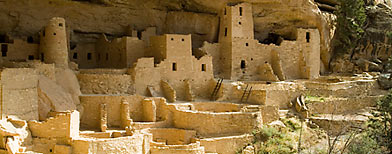The U.S. landscape is home to many unique natural formations that took thousands and thousands of years to develop, but as our population -- and need for more space -- grows, there's a risk some may be lost to future generations. For your next trip, consider these Top 5 disappearing places and enjoy them before they disappear.
5) The Everglades, Florida: The Everglades is the "largest subtropical wilderness" in the country, but because of human encroachment, rare animals are losing their homes. The national park covers about 1.5 million acres and provides all sorts of outdoorsy adventures: camping, kayaking, boating, hiking and bird watching, to name a few.
4) Sunset Cliffs, San Diego, California: These rugged cliffs run along the Southern California coast, with panoramic views of the Pacific Ocean. It's popular area with surfers, whale watchers and weddings. The sandstone bluffs, which feature arches and sea caves, are slowly being eaten away by runoff from developments and irrigation.
3) Coral Reefs of Biscayne National Park, South Florida: These delicate reefs, the only living coral feel in the U.S., are must for avid divers, snorkelers and boaters; the park also features an underwater "trail" that allows visitors to explore various shipwrecks within the park. However, the reef's popularity is also contributing to its disappearance: Some of the coral has declined by 90%, partly due to overfishing.
2) Mesa Verde Cliff Dwellings, Colorado: Pueblo Indians built these 600 cliff dwellings hundreds of years ago, carving them into the sheer sandstone walls. The well-preserved structures range from one-room dwellings to a 150-room "palace." Despite its remote location, pollution, invasive plant species and runoff are just a few of the environmental issues that the park is battling.
1) The Glaciers of Glacier National Park, Montana: In addition to namesake glaciers, the park is also home to bears, gray wolves, golden eagles and lynx. It also features more than 740 miles of trails, so don't forget your hiking boats. In 1850, this national park boasted 150 giant glaciers; today, only 27 remain. By 2030, even those may be gone.










No comments:
Post a Comment